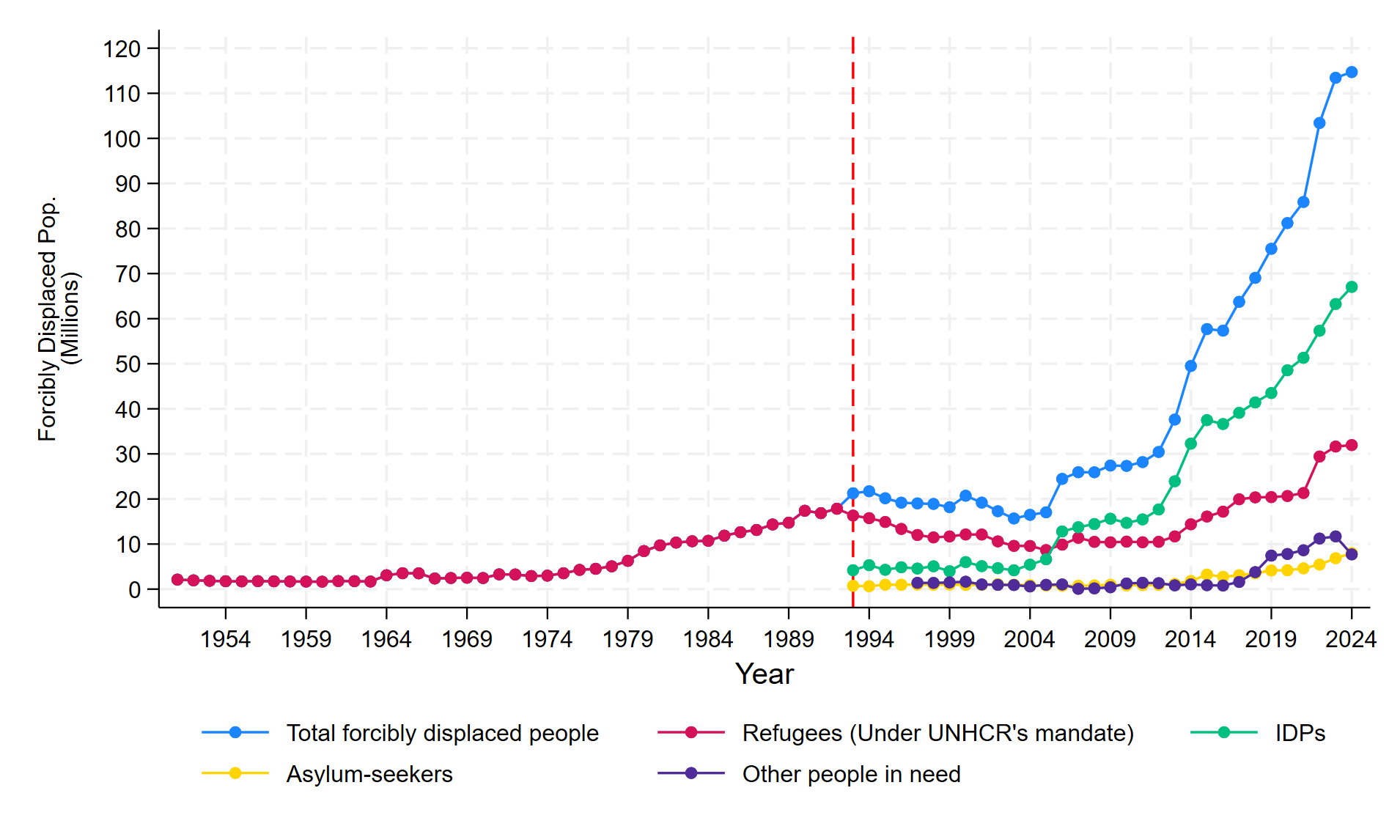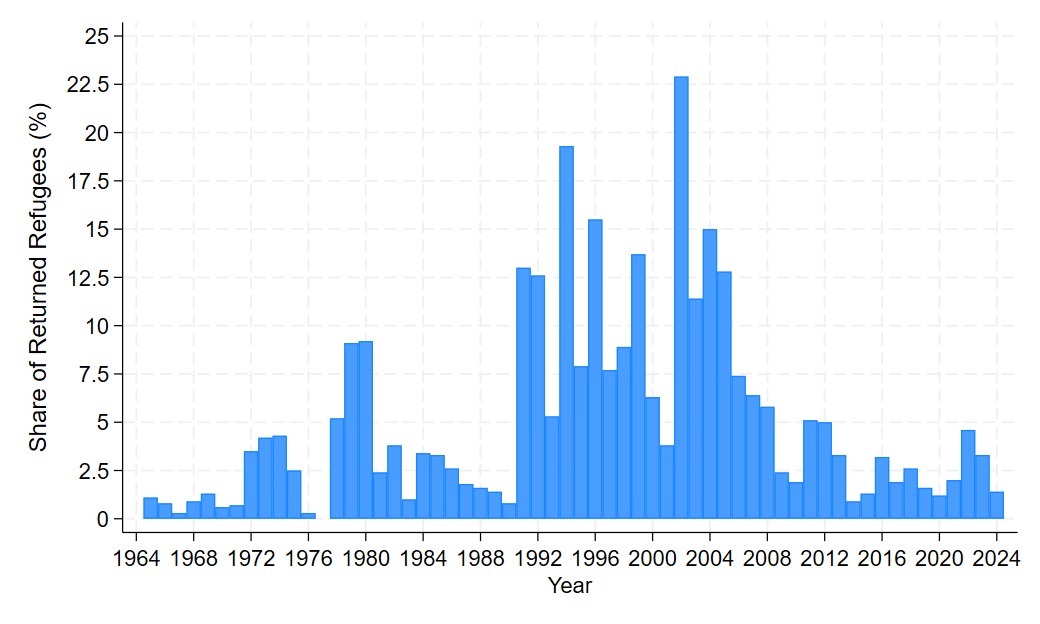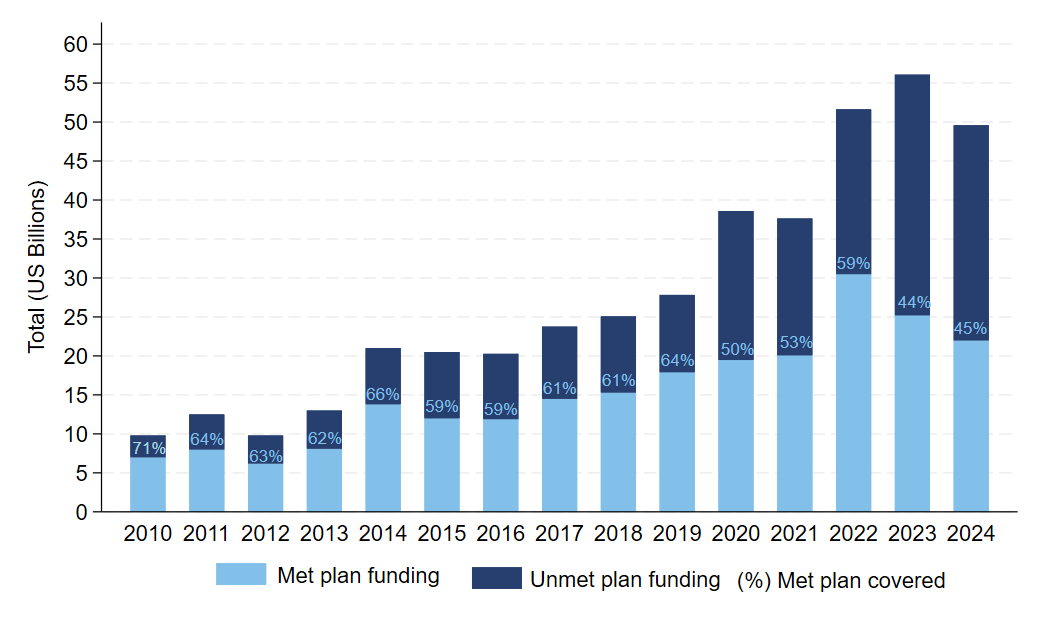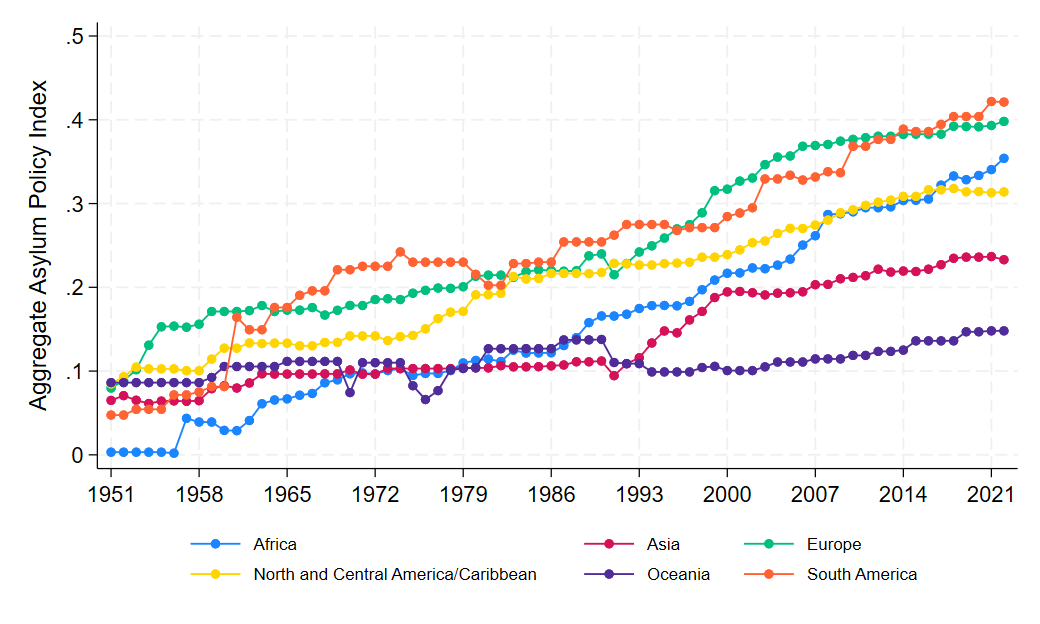
Defining Forced Displacement
This review explores recent research on forced displacement, which refers to the involuntary or coerced movement of individuals driven by circumstances such as generalised violence, persecution, conflict, natural disasters, or human rights violations. While the definition of forced displacement may be clear on paper, distinguishing between voluntary and involuntary migration is often challenging in practice, as often the line between the two can be blurred. Forced migrants are classified into:
- Refugees: who have crossed an international border and have been recognised as such by their country of asylum.
- Internally Displaced Populations (IDPs): who remain within their country's borders.
- Asylum Seekers: who are seeking international protection but whose claims for refugee status are yet to be determined.
- Other People in Need: which typically represent other forcibly displaced populations which are not yet recognised as refugees under international frameworks, often due to ongoing political negotiations.
Global Trends: The Exponential Growth of Forced Displacement
Since the United Nations Refugee Agency (UNHCR) began systematically recording data in 1951, the number of forcibly displaced individuals has grown exponentially, surpassing 120 million by mid-2024 (Figure 1, Panel A). Unfortunately, with the persistent emergence of new conflicts and the escalating risks posed by climate change, this upward trend is likely to continue. Today, nearly every continent faces a forced migration crisis, encompassing both origin and destination countries (Figure 1, Panel B).
Figure 1: Global Trends in Forced Displacement, 1951–2024
Panel A: Overall Time Trend

Panel B: Top Origin and Destination Countries

Notes: Panel A illustrates the overall time trend of forcibly displaced populations registered by UNHCR from 1951 to 2024. Since 1993, UNHCR has categorised forcibly displaced individuals into four groups: refugees, asylum-seekers, others in need of protection, and internally displaced persons (IDPs). Panel B shows migration flows between origin and host countries for the top 30 countries with registered refugees, asylum-seekers, and others of concern during the same period. The width of each line represents the number of refugees migrating, with thicker lines indicating larger migration flows.
Policy Relevance: Transitioning from a Humanitarian to a Self-Sufficiency Approach
Forced displacement crises are often protracted, with forcibly displaced individuals rarely returning to their places of origin (Figure 2). Given the exponential increase in the number of forcibly displaced individuals, the enduring nature of these crises, and the low return rates and low rates of resettlements in high-income countries, it is essential to transition from a basic humanitarian response to approaches that enable forced migrants to achieve economic self-sufficiency in the medium to long term (Moya and Rozo 2025). This need is particularly urgent when considering that international humanitarian aid is both finite and insufficient, currently covering only 45% of the required funding to address these emergencies (Figure 3). The immense scale of the problem underscores the critical importance of generating evidence on the most effective ways to improve the well-being of forced migrants and their host communities.
Figure 2: Protracted Crises: Trends in Refugee Returns, 1951–2024

Notes: The percentage labels in each bar represent the global appeal coverage tracked for each year. Data source: Financial Tracking Service, OCHA Services.
Figure 3: Humanitarian Funding and the Gap in Coverage for Forced Displacement Crises

Notes: The percentage labels in each bar represent the global appeal coverage tracked for each year. Data source: Financial Tracking Service, OCHA Services.
Encouragingly, trends in policy support for forcibly displaced populations indicate gradual progress. The Dataset of World Refugee and Asylum Policies (DWRAP)
Figure 4: Aggregate Asylum Policy Index

Notes: Data are sourced from the Dataset of World Refugee and Asylum Policies (DWRAP). The figure displays the evolution of the Aggregate Asylum Index from 1951 to 2021, disaggregated by continent. The Aggregate Asylum Index is a principal component index comprising five dimensions: (1) access, reflecting the ease of entry and security of legal status; (2) services, covering the provision of public services and welfare; (3) livelihoods, representing the ability to work and own property; (4) movement, addressing encampment policies; and (5) participation, including citizenship and political rights. The index ranges from 0 to 1, with higher values indicating more inclusive policies.
Objective of This Review
This review synthesises findings from studies published or released as working papers since 2010, focusing on the effects of forced displacement in host communities and the evaluation of policies designed to support forced migrants and their host communities. The scope is limited to quantitative studies employing quasi-experimental or experimental methods. While this approach excludes much valuable qualitative and descriptive work, these boundaries are necessary for space and analytical focus. A summary of all papers included in the review is provided in the Online Table Appendix accompanying this document. Further details on the scope of the review are described in Appendix A.
The review is organised into four additional sections. Section II characterises the body of research included within the review’s scope. Section III examines the evidence on the impacts of forced displacement on host communities. Section IV explores research evaluating the effects of policies aimed at supporting forced migrants and their host communities. Finally, Section V concludes by presenting key policy lessons and identifying potential directions for future research.
Reference
Moya, A and S V Rozo (2025), “Refugees and Social Protection” in Hanna R, and B Olken (eds.), Handbook of Social Protection.
Contact VoxDev
If you have questions, feedback, or would like more information about this article, please feel free to reach out to the VoxDev team. We’re here to help with any inquiries and to provide further insights on our research and content.

